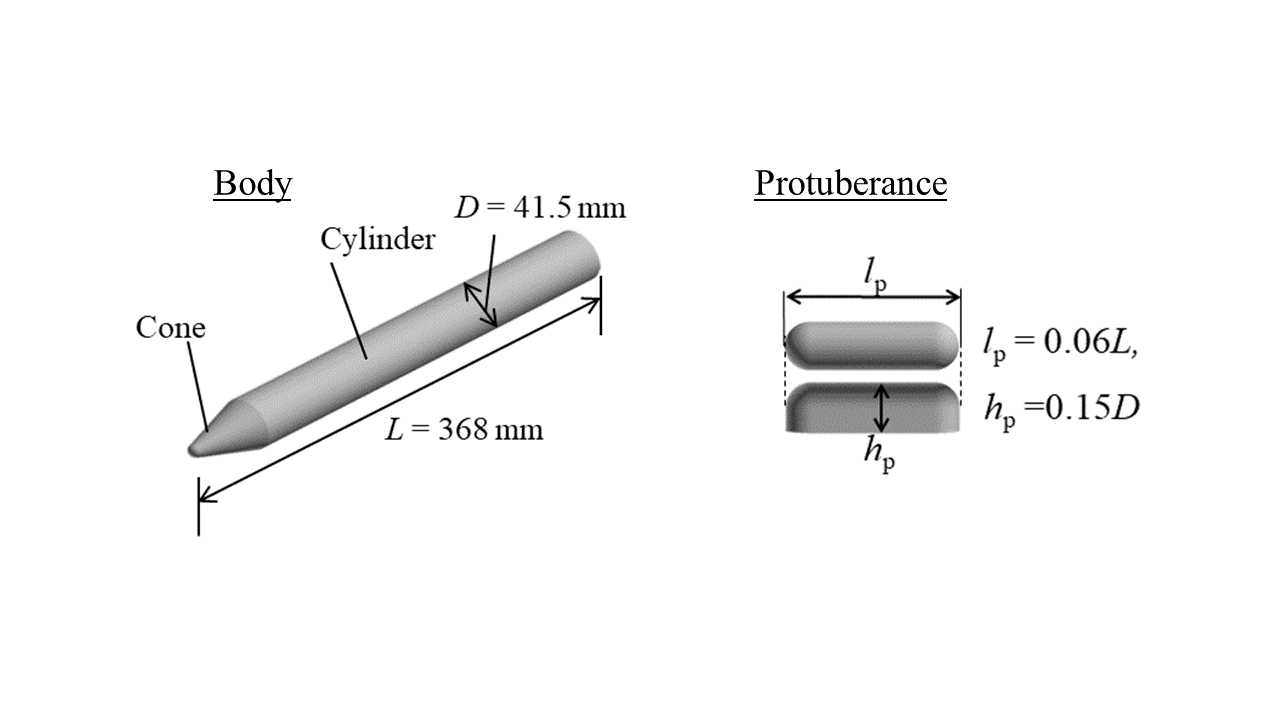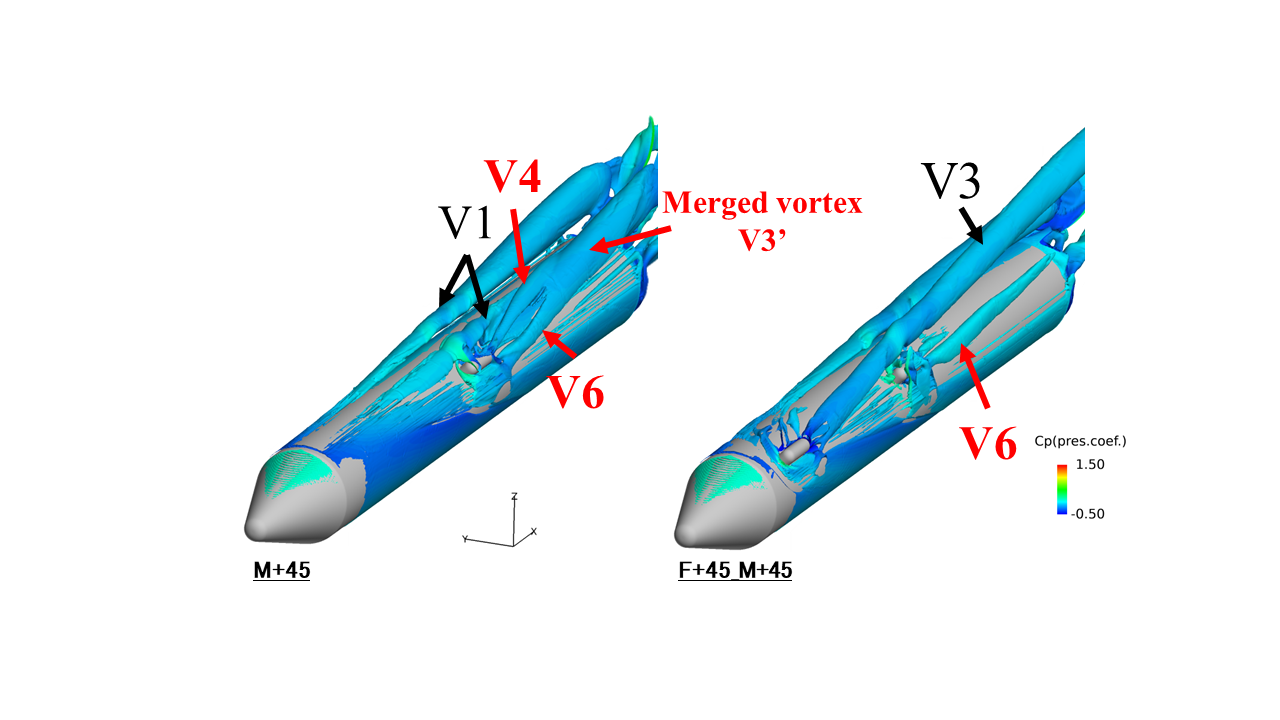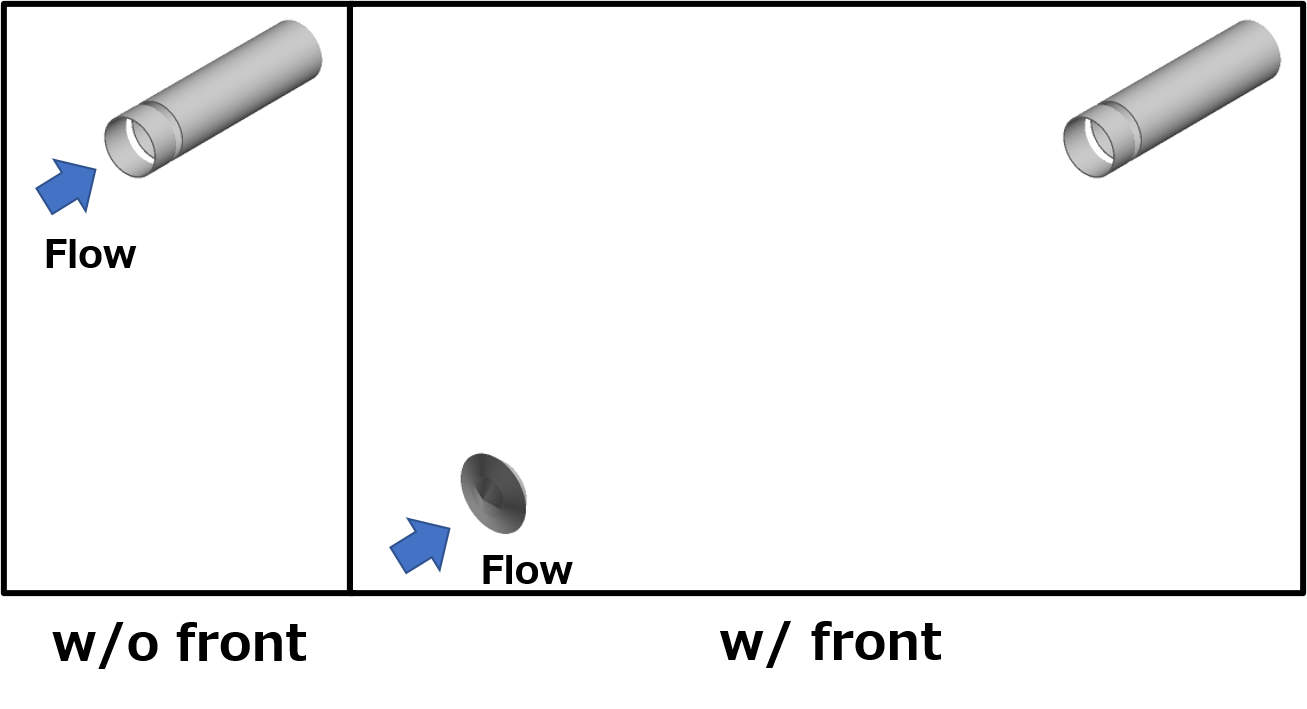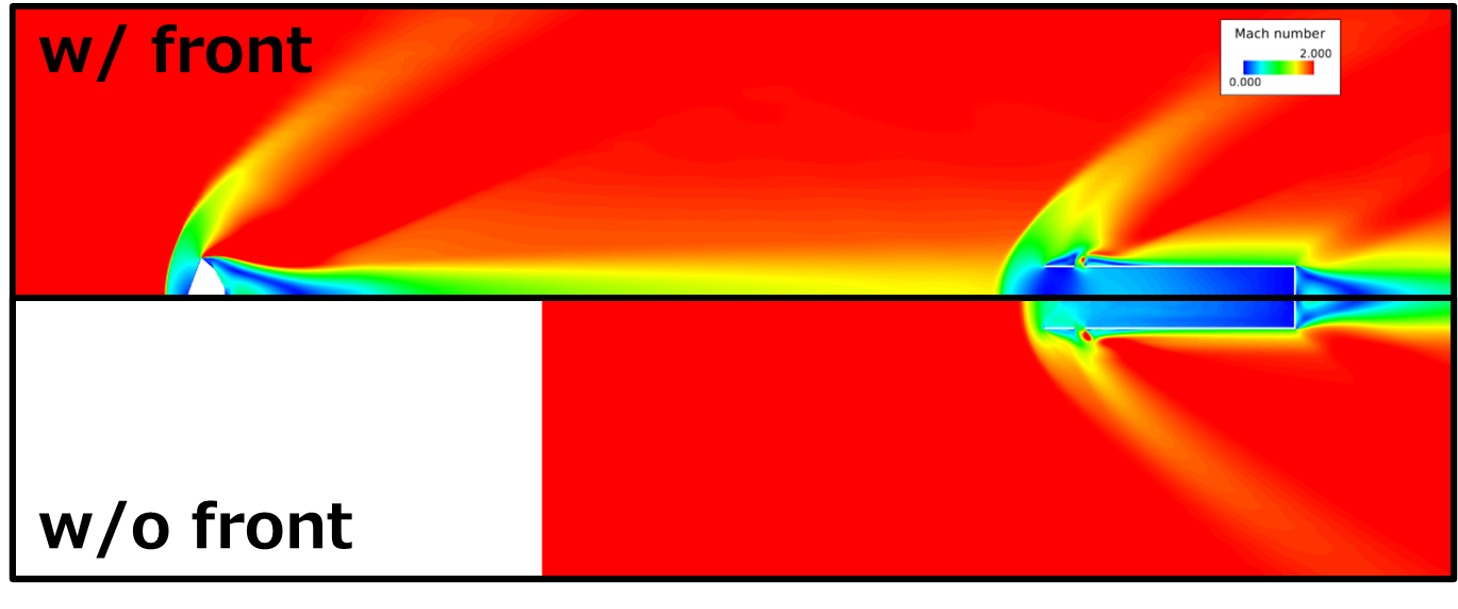Supersonic Aerodynamics Characteristics of Flying Vehicle
JAXA Supercomputer System Annual Report April 2020-March 2021
Report Number: R20EACA20
Subject Category: JSS Inter-University Research
- Responsible Representative: Keiichi Kitamura, Associate Professor, Yokohama National University
- Contact Information: Fumiya TSUTSUI (Yokohama National University)(tsutsui-fumiya-rt@ynu.jp)
- Members: Keiichi Kitamura, Fumiya Tsutsui, Yuya Yasumura
Abstract
Flying vehicles, such as rockets and supersonic parachutes, fly at supersonic speeds and play an important role in transporting goods. Hence, it is important to ensure stable flight. Factors that inhibit flight stability include protuberance on the rocket and unsteady shock wave oscillations of the supersonic parachute. The effects of these factors on the aerodynamic characteristics of flying vehicles are still unclear, and the knowledge obtained in wind tunnel tests is limited. Therefore, we will conduct numerical analysis of slender-bodied vehicle that mimics and supersonic parachutes under supersonic conditions to obtain precise aerodynamic data. The purpose of this study is to contribute to the aerodynamic design of supersonic flight vehicles for safe flight.
Reference URL
N/A
Reasons and benefits of using JAXA Supercomputer System
In this study, it is necessary to accurately capture the various vortices around the slender body and the shock wave oscillations of the supersonic parachute, which require high-resolution computational grids, resulting in a huge computational cost. Therefore, it is necessary to use a supercomputer that can perform highly accurate large-scale calculations in a short time.
Achievements of the Year
1. Aerodynamic Characteristics of Slender Body with Asymmetric Multiple Protuberance
For the slender body with a slenderness ratio of 8.9 as shown in Fig. 1, one protuberance was attached to the downwind side of the front portion and the other is to various roll positions at the middle portion.
Numerical analyses were performed with the uniform flow Mach number M = 1.5 and angle of attack AoA = 15 [deg.]. We obtained interesting results in the case of the protuberance arrangement shown in Fig. 2 (F+45_M+45). In this case, the vortex V3 created by the protuberance at the front portion of the vehicle inhibits the formation of the vortex V3′ downstream of the protuberance at the middle portion. In the case where the vortex structure is changed by the additional protuberance, the side force is not simply the sum of those generated by each of the two protuberances but are slightly reduced compared to the case with only the front protuberance (F+45).
2. Aerodynamic characteristics of a supersonic parachute
The parachute shape at the initial stage of opening, as shown in Figure 3, was analyzed numerically with a uniform flow Mach number of M = 2.0. It was found that the shock standoff distance increased with the presence of the forward object, while the internal pressure of the parachute decreased. This was attributed to the decrease in the upstream Mach number of the shock wave due to the wake of the forward object. In addition, the flow from the inside of the parachute to the outside at the band increased the shock wave departure distance.
Publications
– Oral Presentations
1)Tsutsui, F., Takagi, Y., Takimoto, H., Kitamura, K., and Nonaka, S: Numerical Analysis on Aerodynamic Characteristics of Slender Body with Asymmetric Double Protuberance, 64th Space Sciences and Technology Conference, Virtual Event, 2020.
2)Tsutsui, F., Takagi, Y., Takimoto, H., Kitamura, K., and Nonaka, S.: Numerical Analysis on Aerodynamic Characteristics of Slender Body with Asymmetric Double Protuberance, AIAA-2021-0137, AIAA SciTech Forum 2021, Virtual Event, January, 2021.
Usage of JSS
Computational Information
- Process Parallelization Methods: MPI
- Thread Parallelization Methods: N/A
- Number of Processes: 512 – 1024
- Elapsed Time per Case: 8 Hour(s)
Resources Used(JSS2)
Fraction of Usage in Total Resources*1(%): 0.33
Details
Please refer to System Configuration of JSS2 for the system configuration and major specifications of JSS2.
| System Name | Amount of Core Time(core x hours) | Fraction of Usage*2(%) |
|---|---|---|
| SORA-MA | 1,561,810.38 | 0.30 |
| SORA-PP | 27,312.54 | 0.21 |
| SORA-LM | 6,933.62 | 4.07 |
| SORA-TPP | 0.00 | 0.00 |
| File System Name | Storage Assigned(GiB) | Fraction of Usage*2(%) |
|---|---|---|
| /home | 288.01 | 0.26 |
| /data | 9,670.26 | 0.19 |
| /ltmp | 2,343.75 | 0.20 |
| Archiver Name | Storage Used(TiB) | Fraction of Usage*2(%) |
|---|---|---|
| J-SPACE | 12.77 | 0.42 |
*1: Fraction of Usage in Total Resources: Weighted average of three resource types (Computing, File System, and Archiver).
*2: Fraction of Usage:Percentage of usage relative to each resource used in one year.
Resources Used(JSS3)
Fraction of Usage in Total Resources*1(%): 0.03
Details
Please refer to System Configuration of JSS3 for the system configuration and major specifications of JSS3.
| System Name | Amount of Core Time(core x hours) | Fraction of Usage*2(%) |
|---|---|---|
| TOKI-SORA | 42,052.48 | 0.01 |
| TOKI-RURI | 2,776.04 | 0.02 |
| TOKI-TRURI | 0.00 | 0.00 |
| File System Name | Storage Assigned(GiB) | Fraction of Usage*2(%) |
|---|---|---|
| /home | 478.74 | 0.33 |
| /data | 28,972.64 | 0.49 |
| /ssd | 2,508.16 | 1.31 |
| Archiver Name | Storage Used(TiB) | Fraction of Usage*2(%) |
|---|---|---|
| J-SPACE | 12.77 | 0.42 |
*1: Fraction of Usage in Total Resources: Weighted average of three resource types (Computing, File System, and Archiver).
*2: Fraction of Usage:Percentage of usage relative to each resource used in one year.
JAXA Supercomputer System Annual Report April 2020-March 2021






